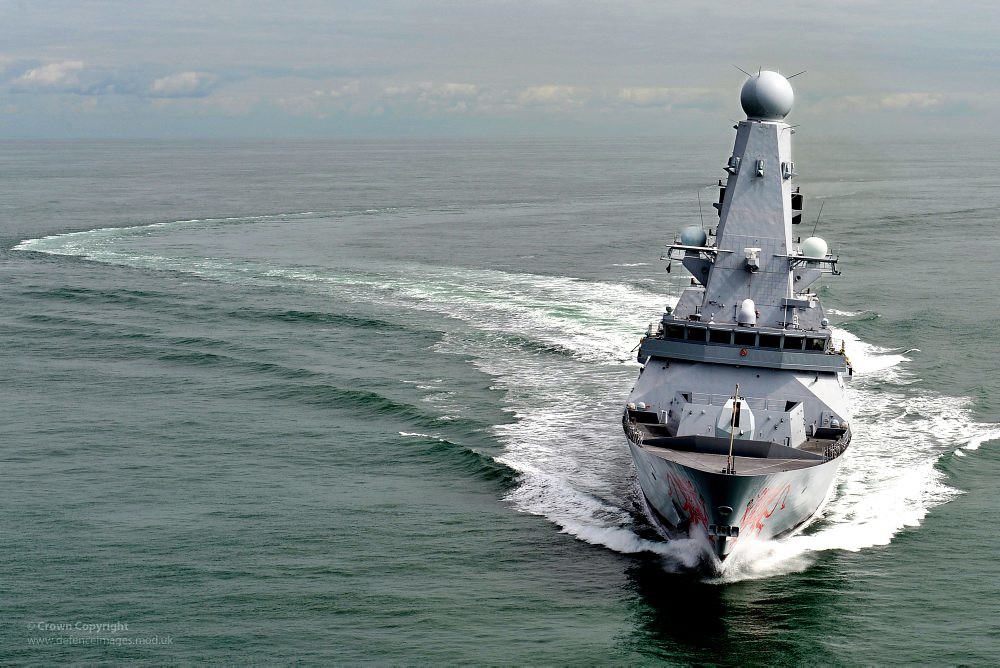
In the early hours of April 26, 2025, off the southern coast of England, the English Channel became a strategic theater of military activity. The Royal Navy’s frigate HMS St Albans navigated the turbulent waters, its radar systems tracking the Russian Navy’s guided-missile frigate, RFN Admiral Golovoko, as it proceeded eastward. Simultaneously, the patrol vessel HMS Mersey shadowed the Russian corvette RFN Soobrazitelny moving westward, while the auxiliary tanker RFA Tidesurge ensured logistical support. Above, a Merlin helicopter conducted aerial reconnaissance, gathering intelligence on the Russian vessels below.
This operation, part of a recurring series of naval engagements between NATO and Russia, highlighted the Royal Navy’s operational readiness and the ongoing strategic significance of the Channel. It underscored the technological capabilities of the Royal Navy’s assets and the geopolitical importance of this narrow, heavily trafficked maritime corridor.
The operation commenced with the deployment of HMS St Albans, a Type 23 frigate based in Plymouth, tasked with monitoring the RFN Admiral Golovoko. This Russian vessel, a formidable part of the Admiral Gorshkov-class, displaces 4,500 tons and is armed with advanced systems, including 16 vertical launch cells capable of launching Oniks or Kalibr cruise missiles, and potentially Zircon hypersonic missiles, which, although unconfirmed, add to the ship’s advanced threat profile. The Admiral Golovoko is equipped with a 3S14 VLS system, a Poliment-Redut air defense system, and a suite of radars and electronic warfare equipment, positioning it as a powerful adversary in naval engagements.
In contrast, HMS St Albans, while comparable in size (4,900 tons and 436 feet), is designed for versatility, particularly in anti-submarine warfare (ASW). Its Type 2087 towed-array sonar system is among the most advanced for detecting submarines, and while the ship is equipped with Harpoon anti-ship missiles, its true edge lies in its ASW capabilities. Its Sea Ceptor air defense system and Merlin helicopter, equipped with sonar and torpedoes, extend its surveillance reach, providing a comprehensive tracking capability.
Meanwhile, HMS Mersey, a River-class patrol vessel, took responsibility for tracking the RFN Soobrazitelny, a smaller but agile Steregushchiy-class corvette. The corvette, though lighter at 2,200 tons, is well-armed with Uran anti-ship missiles and a Kashtan air defense system. HMS Mersey’s role, given its lighter armament, raises questions about the Royal Navy’s allocation of resources, as it likely faced the corvette due to limited availability of more heavily armed vessels for the mission.
Supporting the operation, RFA Tidesurge, a replenishment tanker, ensured that the naval assets remained operational without requiring immediate returns to port. The presence of the Russian tanker Kola, alongside the corvette, implied logistical support for the Russian forces, though its precise role in intelligence gathering or purely resupply operations remains speculative.
The English Channel, with its strategic importance and narrow transit routes like the Strait of Dover, serves as a crucial chokepoint for global maritime traffic and is a necessary path for Russian vessels navigating between the Mediterranean and northern naval bases. The operation, following heightened Russian naval activity, may be linked to broader shifts in Russian strategic priorities, including the aftermath of the Syrian conflict.
The operation’s execution was both tactical and technological. The integration of real-time tracking by HMS St Albans, supported by aerial and sensor data from the Merlin helicopter, reflected the Royal Navy’s operational capabilities. The decision to deploy HMS Mersey, despite its lighter armament, underscores a methodical division of labor based on perceived threat levels and available resources.
These actions are not isolated incidents but part of a broader pattern of Russian naval operations in the Channel, which have been ongoing for decades, often testing NATO’s response time and operational coordination. The historical precedent of such operations, including shadowing of Russian vessels in 2025 and 2017, indicates a sustained tempo of naval interactions in this region.
For the Royal Navy, these operations require a high degree of readiness and discipline. The crew of HMS St Albans, which includes personnel across multiple specialized fields, operates at a constant state of alertness, ensuring that they can respond effectively to such threats. This operational tempo, coupled with the challenges of maintaining readiness during adverse conditions, highlights the demanding nature of modern naval service.
In the broader context, this operation is emblematic of current naval warfare, where information dominance plays a more significant role than sheer firepower. The interplay between the technological assets of both NATO and Russian forces, such as radar systems and electronic countermeasures, reflects an ongoing battle for intelligence superiority, where every encounter contributes valuable data to the operational picture.
Looking forward, the frequency of such encounters is likely to increase, driven by Russia’s shifting priorities and NATO’s ongoing commitment to maritime security. The potential incorporation of unmanned systems and advancements in cyber capabilities will reshape these operations, introducing both new opportunities and challenges.
In the end, this operation underscores a critical reality: the sea remains a contested domain where technological sophistication, military readiness, and geopolitical strategy intersect. As Russia’s naval presence continues to probe NATO’s defenses, the response remains resolute and coordinated, signaling the West’s commitment to maintaining maritime security in the face of evolving threats.




